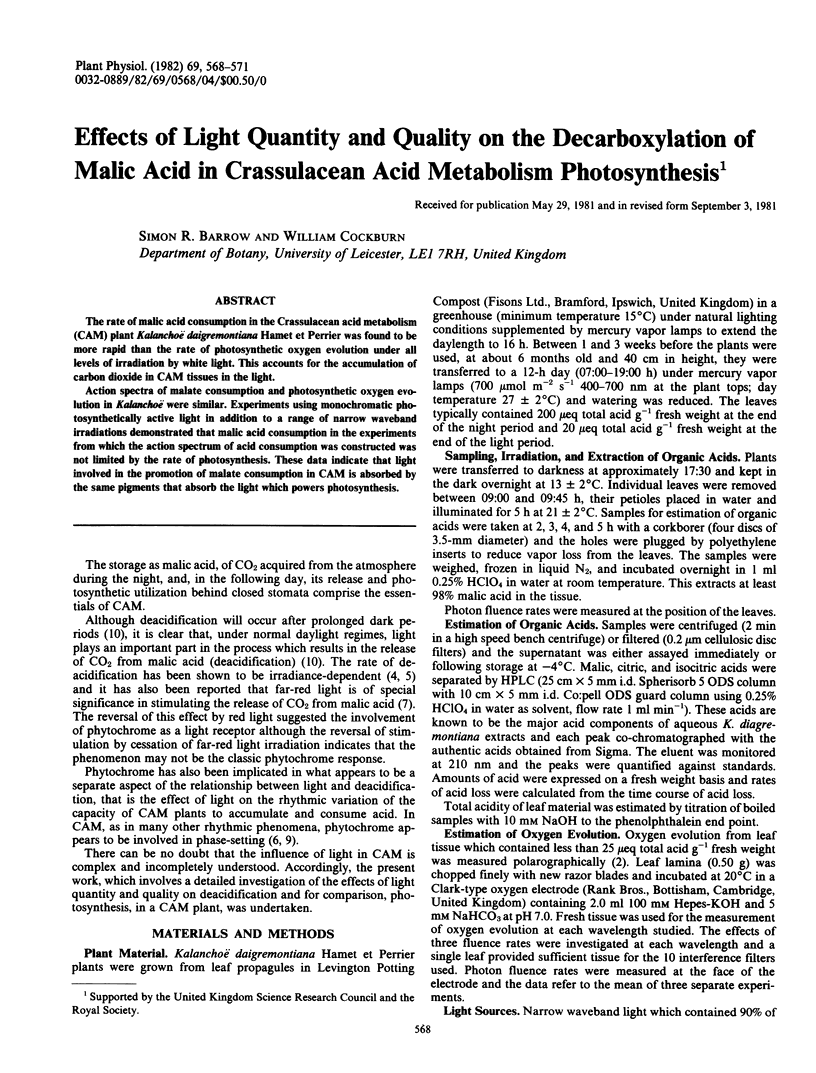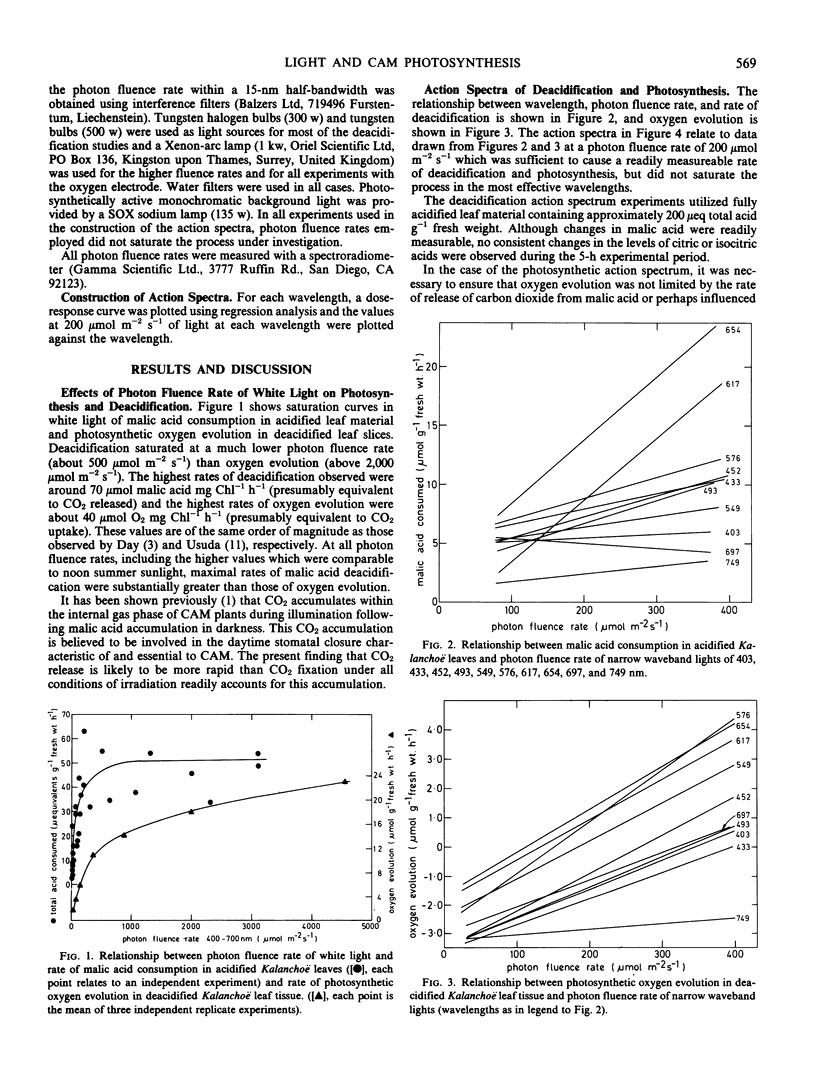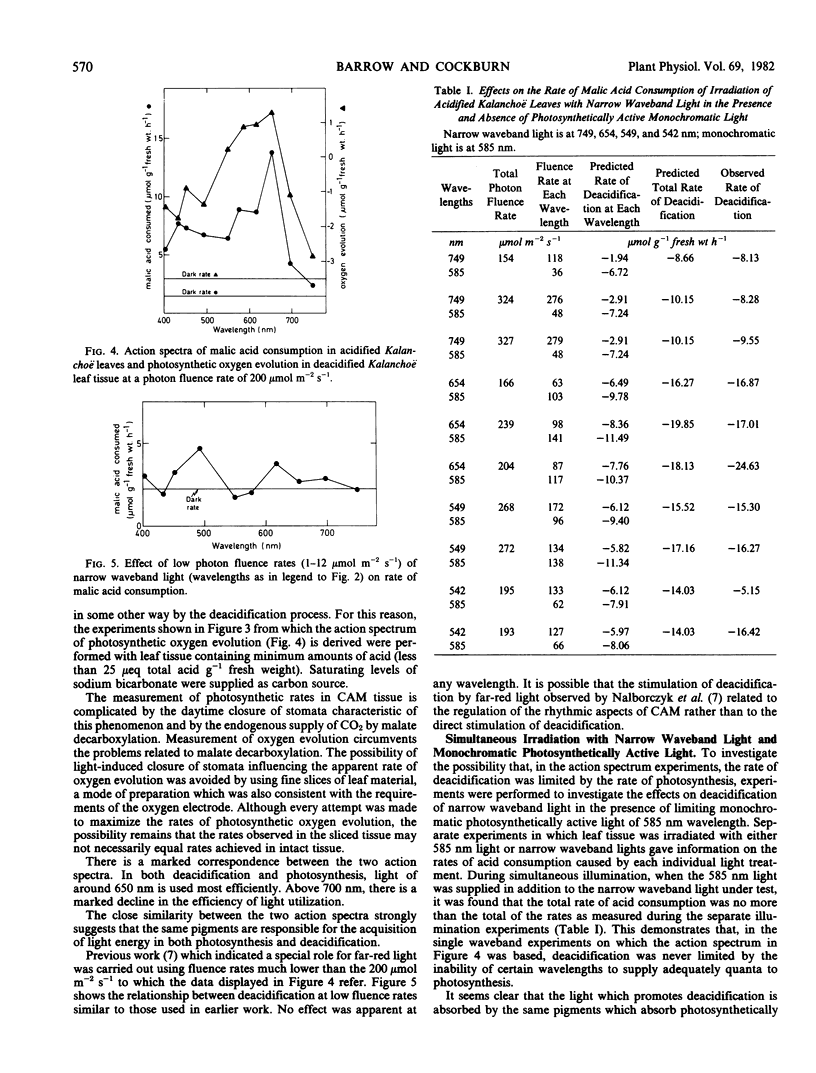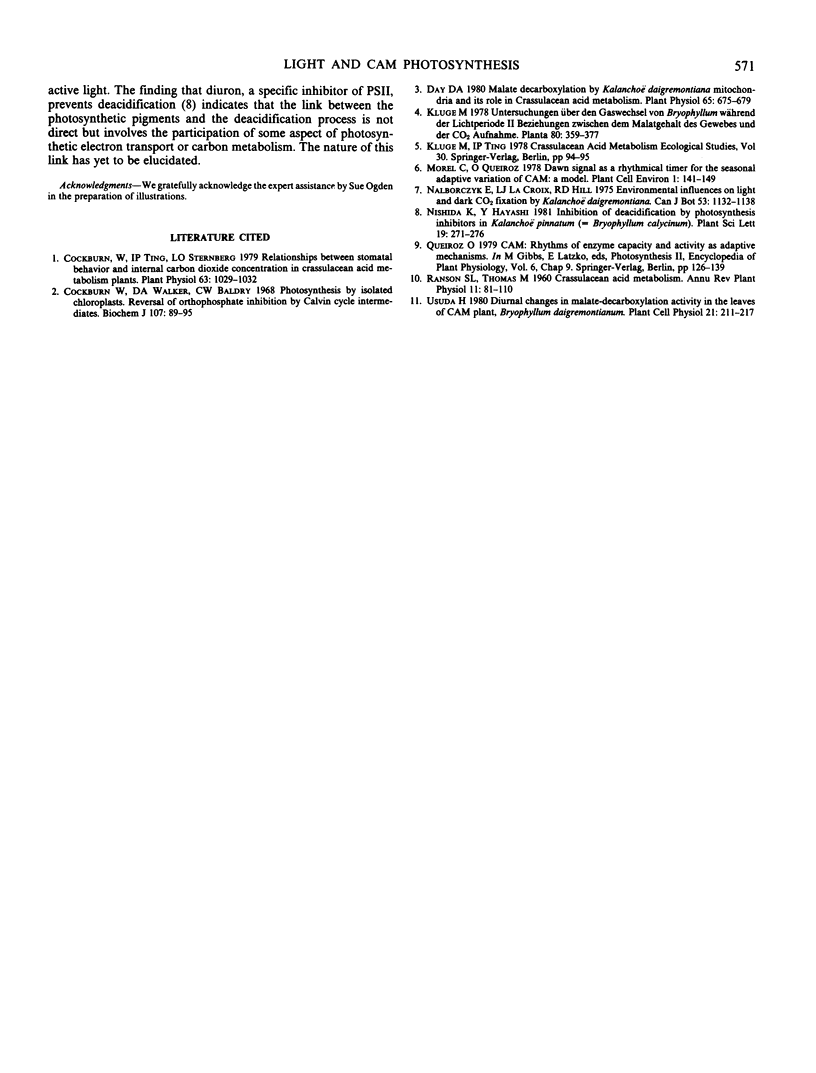Abstract
The rate of malic acid consumption in the Crassulacean acid metabolism (CAM) plant Kalanchoë daigremontiana Hamet et Perrier was found to be more rapid than the rate of photosynthetic oxygen evolution under all levels of irradiation by white light. This accounts for the accumulation of carbon dioxide in CAM tissues in the light.
Action spectra of malate consumption and photosynthetic oxygen evolution in Kalanchoë were similar. Experiments using monochromatic photosynthetically active light in addition to a range of narrow waveband irradiations demonstrated that malic acid consumption in the experiments from which the action spectrum of acid consumption was constructed was not limited by the rate of photosynthesis. These data indicate that light involved in the promotion of malate consumption in CAM is absorbed by the same pigments that absorb the light which powers photosynthesis.
Full text
PDF



Selected References
These references are in PubMed. This may not be the complete list of references from this article.
- Cockburn W. Relationships between Stomatal Behavior and Internal Carbon Dioxide Concentration in Crassulacean Acid Metabolism Plants. Plant Physiol. 1979 Jun;63(6):1029–1032. doi: 10.1104/pp.63.6.1029. [DOI] [PMC free article] [PubMed] [Google Scholar]
- Cockburn W., Walker D. A., Baldry C. W. Photosynthesis by isolated chloroplasts. Reversal of orthophosphate inhibition by Calvin-cycle intermediates. Biochem J. 1968 Mar;107(1):89–95. doi: 10.1042/bj1070089. [DOI] [PMC free article] [PubMed] [Google Scholar]
- Day D. A. Malate Decarboxylation by Kalanchoë daigremontiana Mitochondria and Its Role in Crassulacean Acid Metabolism. Plant Physiol. 1980 Apr;65(4):675–679. doi: 10.1104/pp.65.4.675. [DOI] [PMC free article] [PubMed] [Google Scholar]


